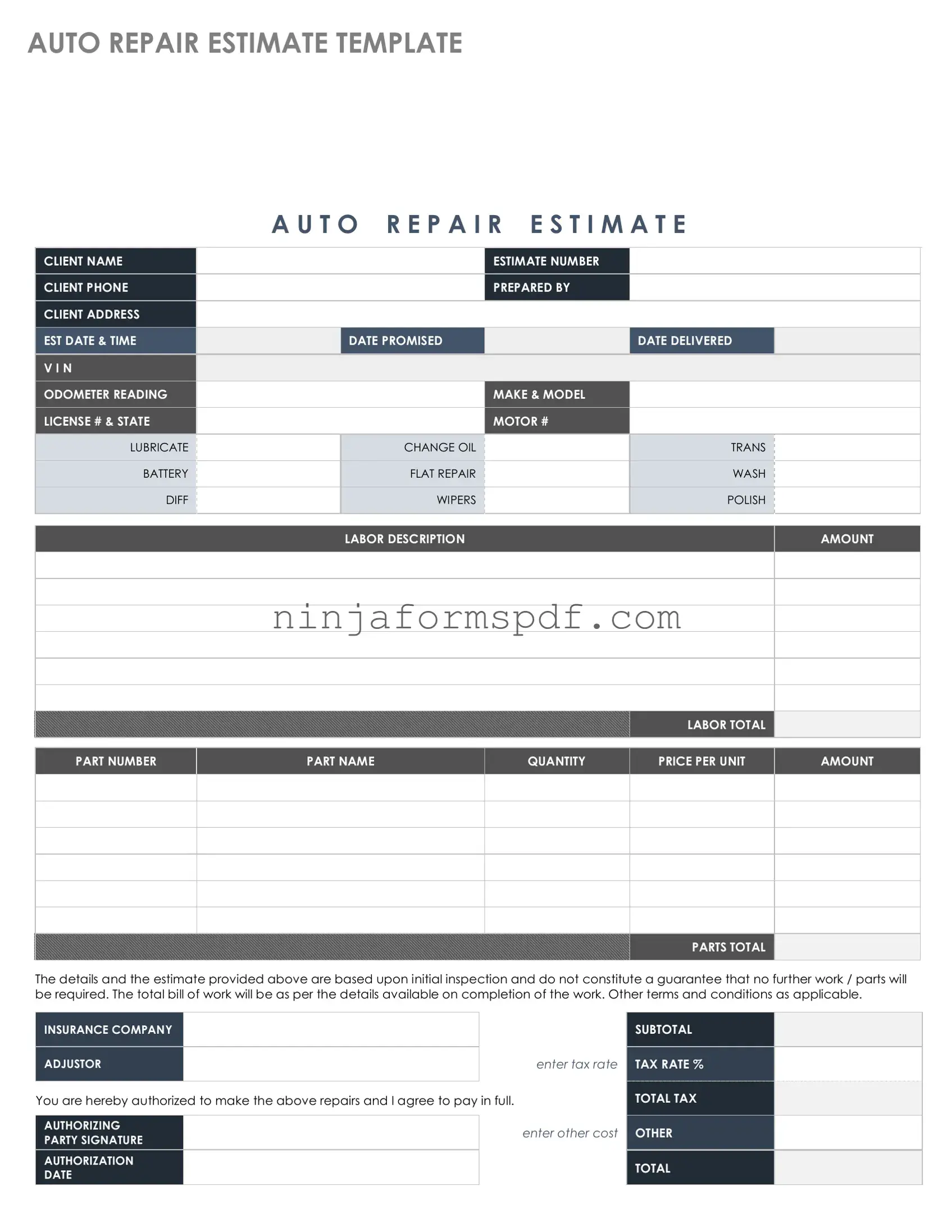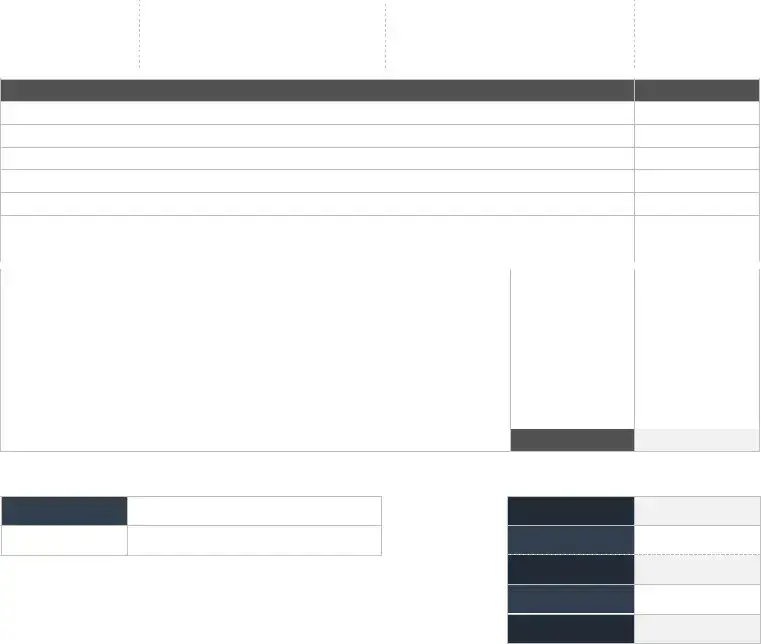What is an Auto Repair Estimate form?
An Auto Repair Estimate form is a document provided by a mechanic or auto repair shop that outlines the expected costs to repair a vehicle. It details the parts and services required to fix the vehicle and an estimate of how much each will cost.
Why do I need an Auto Repair Estimate form?
Getting an Auto Repair Estimate form is crucial because it gives you an upfront understanding of potential repair costs. It allows you to compare prices between different repair shops and helps in making an informed decision on where to have your vehicle repaired. Furthermore, it ensures transparency between the vehicle owner and the repair shop.
Is the price on an Auto Repair Estimate form final?
Generally, the price on an estimate is not final. It is an approximation of the repair costs, based on the initial assessment of the vehicle. Unexpected issues discovered during the repair process can alter the final cost. However, many states have laws that require repair shops to get customer approval before exceeding the estimated costs by a certain percentage.
What should be included in an Auto Repair Estimate form?
An effective Auto Repair Estimate form should include the vehicle's make, model, and year, a detailed list of all the repairs needed, and an itemized list of parts and labor costs. It should also mention any warranties on parts or services, the estimated date of completion, and payment policies.
Can I request revisions to an Auto Repair Estimate form?
Yes, you can request revisions to an estimate if you think certain repairs are unnecessary, or if you've found a better price for a part elsewhere. Communication with the mechanic or repair shop is key to ensuring that both parties agree on the repairs and their costs.
How does the mechanic determine what goes on the estimate?
Mechanics use their knowledge and experience, along with a thorough inspection of the vehicle, to determine what repairs are necessary. They may also use diagnostic tools to identify any underlying issues. The estimate reflects the mechanic's professional assessment of the work required to safely repair the vehicle.
What happens if the actual repair costs exceed the estimate?
If the actual repair costs look like they will exceed the estimate, many states require the repair shop to obtain the vehicle owner's consent before proceeding with the additional work. This requirement helps protect consumers from unexpectedly high bills.
How should I choose a repair shop based on an Auto Repair Estimate form?
When choosing a repair shop, don't just look at the overall cost. Consider the shop's reputation, the warranty offered on parts and labor, and the completeness and clarity of the estimate. Sometimes, a slightly higher estimate might result in better quality work or a more reliable warranty.

